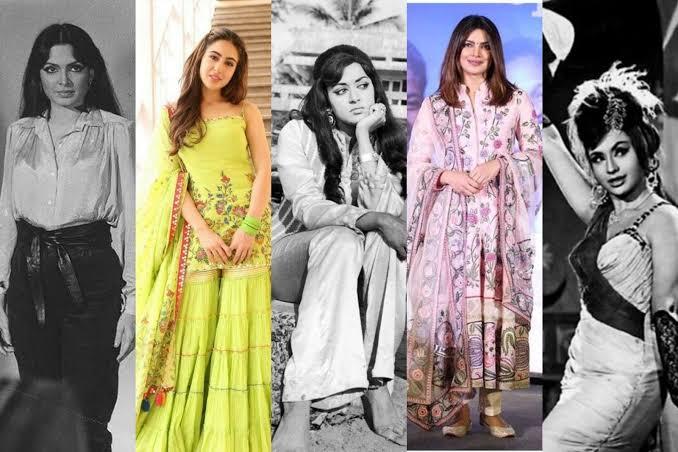The status of women in India has been subject to many changes over the span of recorded Indian history.
Women in India during British rule
While there was no positive British contribution during the Raj era, that is not entirely the case. Many reformers such as Ram Mohan Roy, Ishwar Chandra Vidyasagar and Jyotirao Phule fought for the betterment of women. Peary Charan Sarkar, a former student of Hindu College, Calcutta and a member of Young Bengal, set up the first free school for girls in India in 1847 in Barasat, a suburb of Calcutta (later the school was named Kalikrishna Girls High School). This practice was initially met with local resistance, as it flew in the face of tradition. Many women reformers such as Pandita Ramabai also helped the cause of women.
In 1917, the first womens delegation met the Secretary of State to demand womens political rights, supported by the Indian National Congress. The All India Womens Education Conference was held in Pune in 1927, it became a major organisation in the movement for social change.
Independent India
Women in India now participate fully in areas such as education, sports, politics, media, art and culture, service sectors, science and technology, etc. Indira Gandhi, who served as Prime Minister of India for an aggregate period of fifteen years, is the worlds longest serving female Prime Minister. The Constitution of India guarantees to all Indian women equality (Article 14), no discrimination by the State (Article 15(1)), equality of opportunity (Article 16), equal pay for equal work (Article 39(d)) and Article 42. In addition, it allows special provisions to be made by the State in favour of women and children (Article 15(3)), renounces practices derogatory to the dignity of women (Article 51(A) (e)), and also allows for provisions to be made by the State for securing just and humane conditions of work and for maternity relief. (Article 42).
Feminist activism in India gained momentum in the late 1970s. One of the first national-level issues that brought womens groups together was the Mathura rape case. The acquittal of policemen accused of raping a young girl Mathura in a police station led to country-wide protests in 1979–1980. The protest, widely covered by the national media, forced the Government to amend the Evidence Act, the Criminal Procedure Code, and the Indian Penal Code; and created a new offence, custodial rape.
Since alcoholism is often associated with violence against women in India, many women groups launched anti-liquor campaigns in Andhra Pradesh, Himachal Pradesh, Haryana, Odisha, Madhya Pradesh and other states. Many Indian Muslim women have questioned the fundamental leaders interpretation of womens rights under the Shariat law and have criticised the triple talaq system.
Besides of all there Indian Women faces below discussed crimes:
Crimes against women in India
Crime against women such as rape, acid attacks, dowry killings, honour killings, and the forced prostitution of young girls has been reported in India. Police records in India show a high incidence of crimes against women. The National Crime Records Bureau reported in 1998 that by 2010 growth in the rate of crimes against women would exceed the population growth rate. Earlier, many crimes against women were not reported to police due to the social stigma attached to rape and molestation. Official statistics show a dramatic increase in the number of reported crimes against women.
Acid attacks against women often are done as a form of revenge and are often done by relatives or friends. The number of acid attacks has been rising in recent years. the most common types of acid used in attacks, are generally cheap and widely available as a common cleaning supply.
Child marriage has been traditionally prevalent in India but is not so continued in Modern India to this day. Historically, child brides would live with their parents until they reached puberty. In the past, child widows were condemned to a life of great agony, shaved heads, living in isolation, and being shunned by society. Although child marriage was outlawed in 1860, it is still a common practice.
Around 70% of women in India are victims of domestic violence, according to Renuka Chowdhury, former Union minister for Women and Child Development Domestic violence was legally addressed in the 1980s when the 1983 Criminal Law Act introduced section 498A Husband or relative of husband of a woman subjecting her to cruelty. In India, domestic violence toward women is considered as any type of abuse that can be considered a threat; it can also be physical, psychological, or sexual abuse to any current or former partner.
Ultrasound scanning constitutes a major leap forward in providing for the care of mother and baby, and with scanners becoming portable; these advantages have spread to rural populations. However, ultrasound scans often reveal the sex of the baby, allowing pregnant women to decide to abort female foetuses and try again later for a male child. This practice is usually considered the main reason for the change in the ratio of male to female children being born.
Female infanticide (killing of infant girls) is still prevalent in some rural areas. Sometimes this is infanticide by neglect, for example families may not spend money on critical medicines or withhold care from a sick girl.
one of Indias most common crimes against women is Rape. Since the 1980s, womens rights groups lobbied for marital rape to be declared unlawful, but the Criminal Law (Amendment) Act, 2013 still maintains the marital exemption by stating in its exception clause under Section 375, that: Sexual intercourse or sexual acts by a man with his own wife, the wife not being under fifteen years of age, is not rape.


